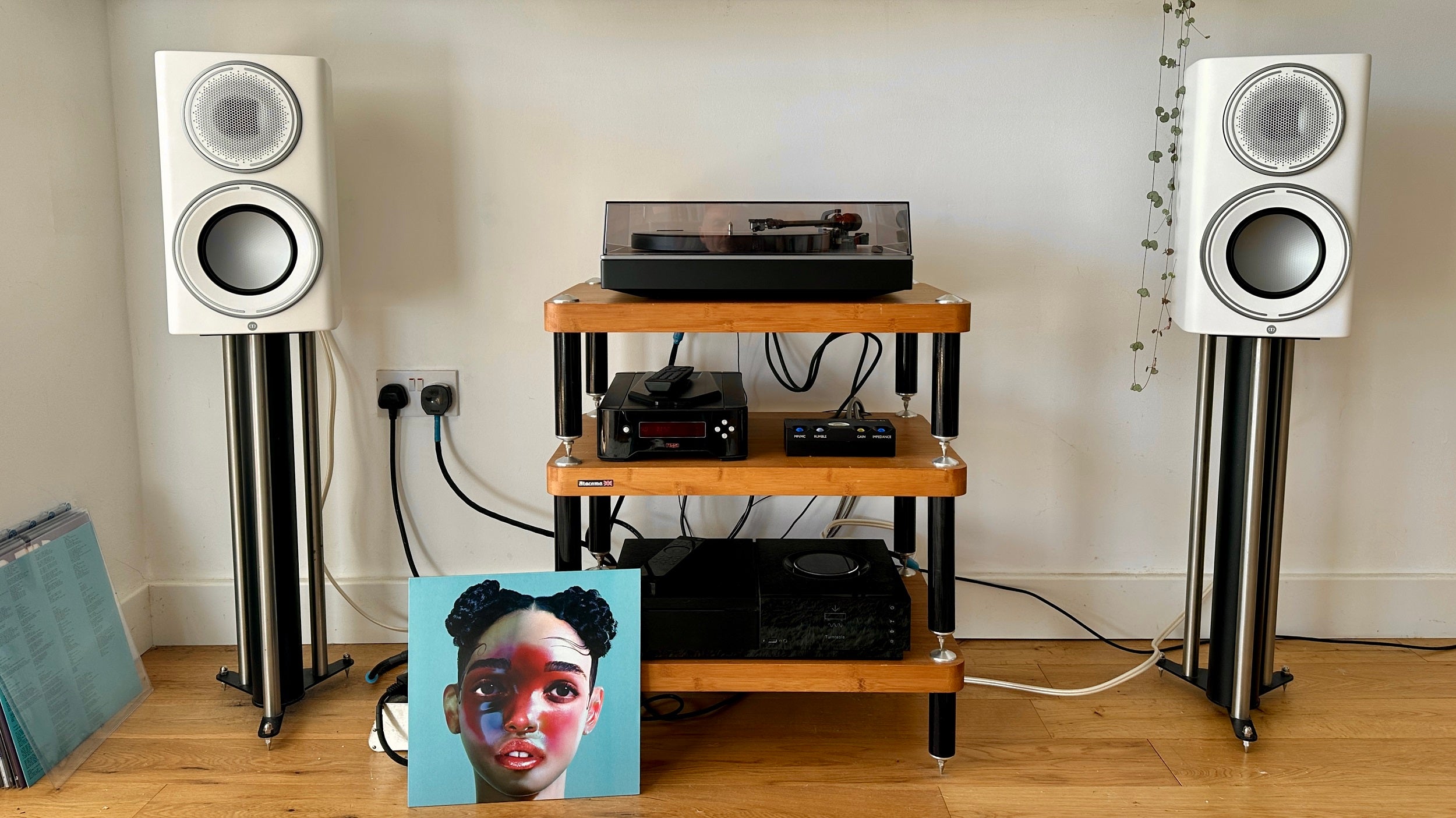Verdict
Not for everyone, obviously – and for several reasons. But if you can do the right thing by them, the Monitor Audio Platinum 100 3G are an endlessly and thoroughly rewarding pair of loudspeakers.
Pros
- Thrillingly complete, entertaining sound
- Specified and constructed without compromise
- Not as uptight as quite a few alternative designs
Cons
- Only small and affordable by the standards of the rest of the range
- Require a bit of space in which to do their thing
- Require similarly pricey partnering equipment
-
ColourwaysComes in piano black, piano ebony, pure satin white finishes -
Low frequenciesRear-firing bass reflex port -
Driver set-upCompact, two-way speaker set-up
Introduction
It’s been eight years since Monitor Audio launched the second generation of its range-topping Platinum series of loudspeakers, and so it’s high time a third generation made an appearance.
This Platinum 100 3G is the smallest and most modestly priced of the all-new third-gen Platinum series, which is another way of saying it’s quite big and pretty expensive. Is it worth the investment of space and money?
Availability
The Monitor Audio Platinum 100 3G are on sale in the United Kingdom for £4500 a pair. In the United States you’re looking at $6000, while in Australia the going rate is AU$8000.
Would it be especially helpful to point out this is quite a lot of money for a pair of passive, standmounting loudspeakers? And yet Monitor Audio is far from the only specialist ready to part you from this sort of money for a similar product – the names Bowers & Wilkins, ProAc, and Spendor spring to mind, and we haven’t even looked outside the British Isles yet…
Design
- 398 x 225 x 326mm (HxWxD)
- 15.2kg
- Piano black, piano ebony, pure satin white finishes
As those dimensions and that weight measurement strongly indicate, the PL100 3G are only small by the standards of the other products in the Platinum 3G range. These are hefty standmounters, and they require a bit of breathing-space in all directions if they’re going to do their thing.
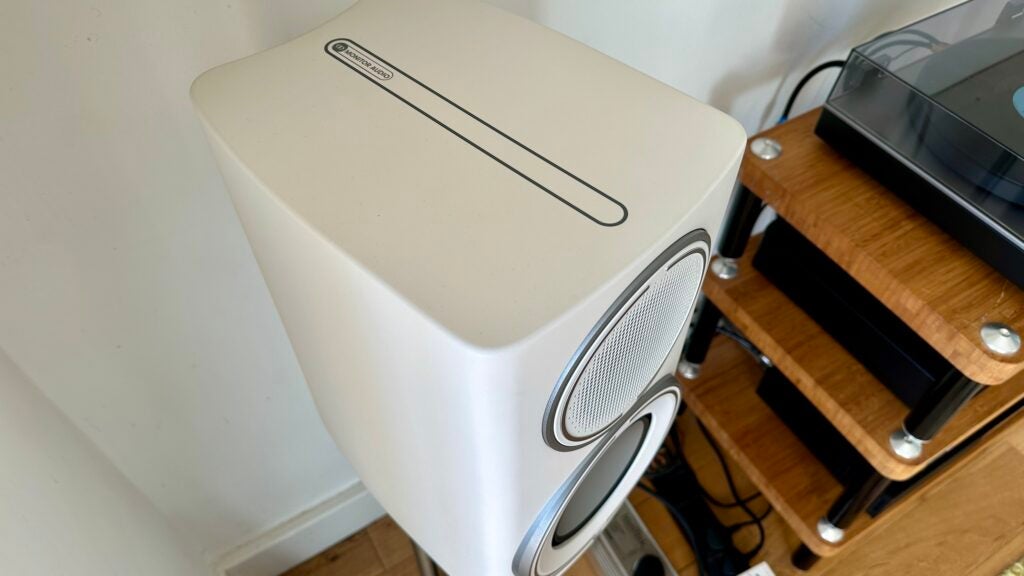
Mind you, Monitor Audio has managed to mitigate that bulk thanks to some very judicious choices of finish, outstanding quality of build, and some very impressive cabinet-work. The curved edges at the front baffle, the more pronounced curves at the rear, the etched inlays on the top of the cabinet, and the flawless application of numerous coats of lacquer all serve to make these speakers more acceptable as furniture than the vast majority of their nominal rivals.
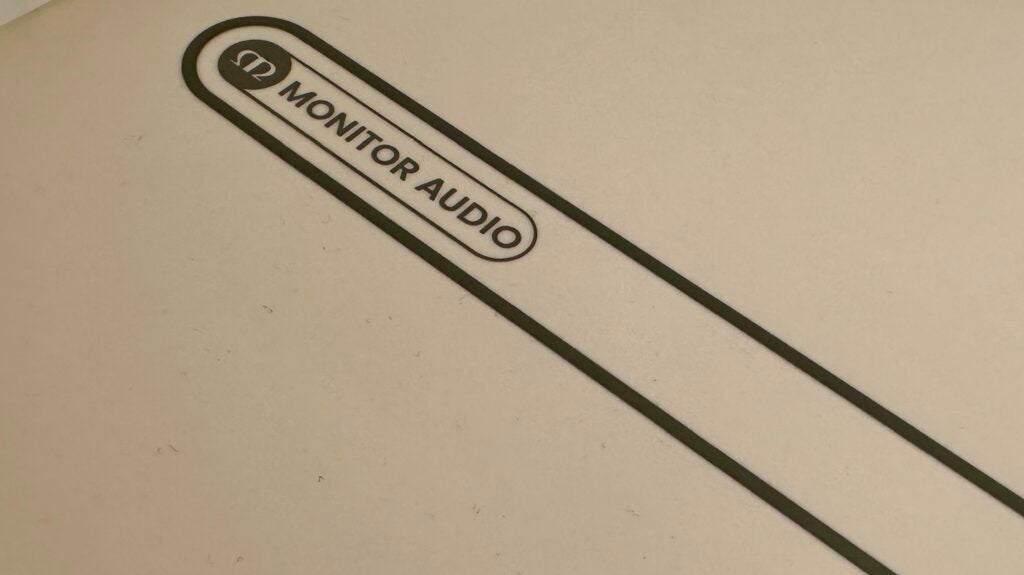

It has to be said, though, that the pure satin white finish of my review sample combines with the anodised metal driver surrounds to make the PL100 3G more than a little reminiscent of the Star Wars stormtroopers. Or maybe that’s just me…
Features
- MPD III high-frequency transducer
- RDT III mid/bass driver
- Rear-firing bass reflex port
The Monitor Audio PL100 3G is a two-way design, augmented by a rear-facing bass reflex port above some very chunky bi-wire speaker binding posts. As you can tell from the pictures, they’re purposeful and quite unusual lookers by the standards of passive loudspeakers – and there are a couple of abbreviations to get your head around too.
At the top of the front baffle, behind an extremely complex and quite dramatic-looking waveguide, there’s a third-generation micro-pleated diaphragm transducer. In simple terms, this is a ribbon tweeter – but the MPD III is claimed to offer high-frequency extension all the way up to 60kHz, where even dogs might have a job hearing it.
Monitor Audio reckons that waveguide allows for controlled, consistent high-frequency directionality in both the vertical and horizontal planes.
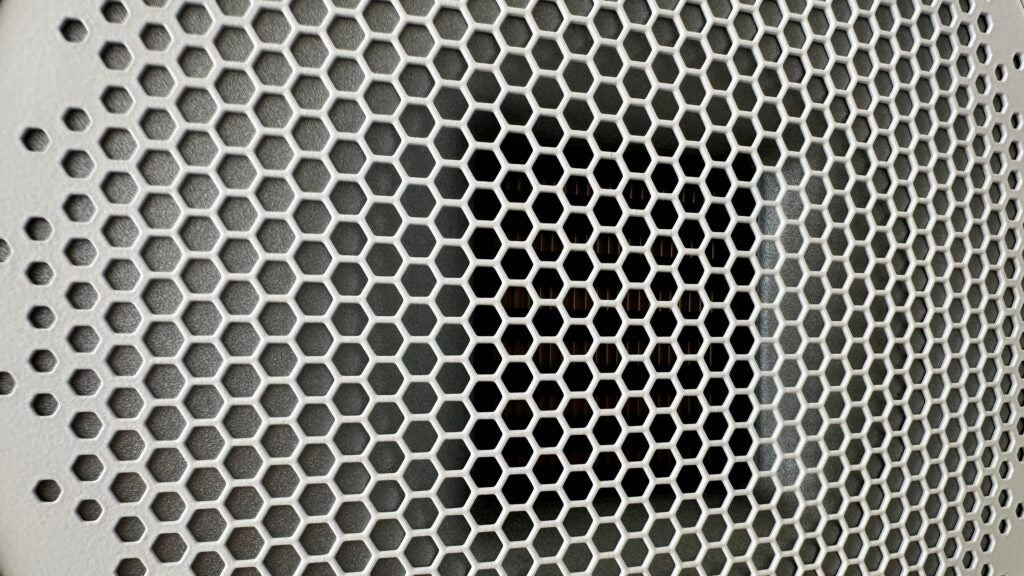

Beneath the MPD III sits the 152mm RDT III mid/bass driver. Monitor Audio has been advocating this rigid diaphragm technology for a while now, and this third-generation version is a continuous profile cone built from three layers for optimum strength and lightness. A honeycombed Nomex core is sandwiched between a thin-but-rigid ceramic-coated aluminium layer on one side and two layers of carbon-fibre on the other – the carbon-fibre layers are bonded at 90 degrees to each other to maximise strength.
Then a big Neodymium magnet, and reimagined motor assembly with underhung, edge-wound voice-coil contribute to excellent pistonic control and the ability to handle significant power. Look closely and you’re just about able to discern the Nomex pattern on the face of the driver.
Despite these relatively esoteric technologies, though, the PL100 3G is an unremarkable 4ohm load, has a similarly unremarkable 85dB sensitivity, and shouldn’t present any kind of difficulty to an amplifier with between 75 and 300 watts of power.
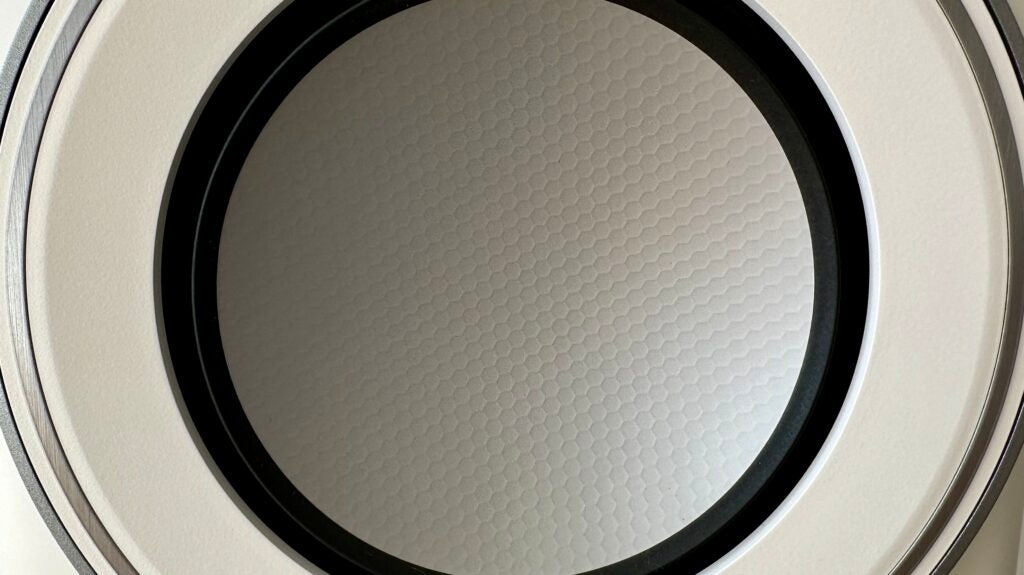

Sound Quality
- Unquestionable control and authority
- Prodigious powers of detail retrieval
- A comfort zone the size of a small country
Discussing the sonic abilities of the Monitor Audio Platinum 100 3G requires a caveat or two – so I might as well deal with those first.
You’ll need to have invested with similar determination where amplification and source equipment are concerned. You can’t expect to hear what your £4.5K loudspeakers are capable of if you’re driving them with a few hundred quid’s-worth of amplification…
And the PL100 3G require a bit of room, both at their rear – so the reflex port doesn’t get ideas above its station – and sides. Yes, the picture of the speakers on their stands in my home doesn’t seem to show either of those things – but in the manner of a serving suggestion on food packaging, that picture is for demonstration purposes only. That’s not how I listened to them – they require more elbow-room than that.
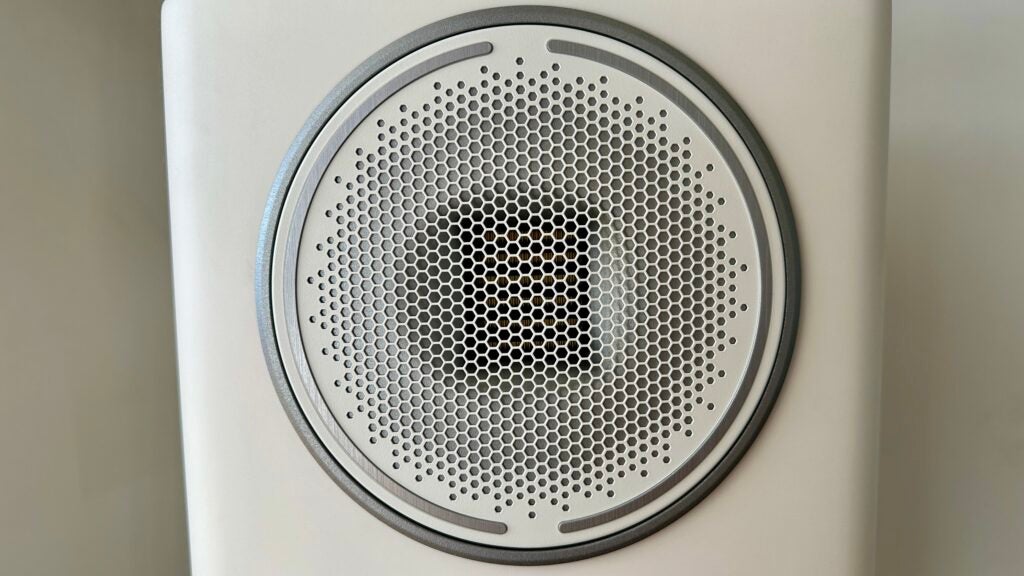

As part of an appropriate system, though, and in enough free space to properly do their thing, the PL100 3G are an almost endlessly rewarding listen. When it comes to control, authority, detail retrieval, dynamic headroom, soundstaging and basically everything else that goes to make up an outstanding loudspeaker, they’re deeply impressive.
With a vinyl copy of FKA Twigs’ LP1 to deal with, the Monitor Audio waste no time establishing who’s boss. The low frequencies they generate are deep and substantial, straight edged, and rapid, lavishly textured, and absolutely crammed with detail. The control of attack and decay means rhythmic expression is assured, and the amount of tonal variation the PL100 3G can describe is significant.
And at the opposite end, that complex high-frequency transducer arrangement allows treble sounds real substance as well as brilliance – there’s proper bite and attack to the top end, but no suggestion of edginess or any other unruliness.
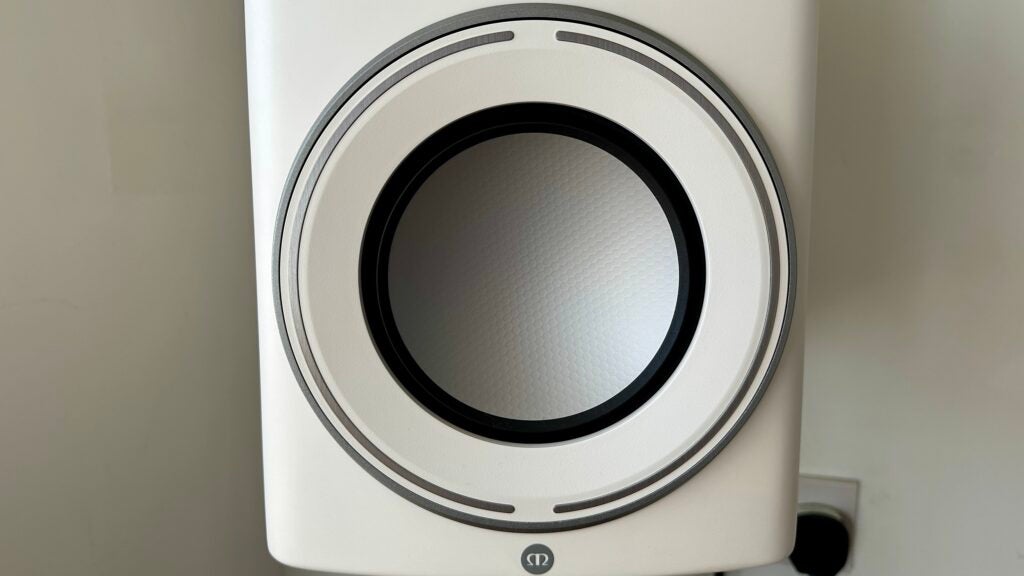

In the midrange, the Monitor Audio communicate in the opulent manner. The amount of fine detail regarding tone and timbre they’re able to extract and contextualise, and the eloquence and character they invest into a vocal line, is remarkable. There’s an immediacy to the way the midrange is delivered that seems to be at odds with the smooth integration of the entire top-to-bottom frequency range – and yet it’s all in evidence, all the time.
The overall tonal balance is beautifully judged – there’s a certainty and a positivity to these speakers’ tonality that makes even processed, artificial sounds somehow natural and convincing. The PL100 3G lay out a soundstage with real confidence, too – every element of a recording is secure in its area, the spaces and silences around them are dark and quiet, and despite their powers of separation the Monitor Audio integrate every strand into a singular and unified whole.
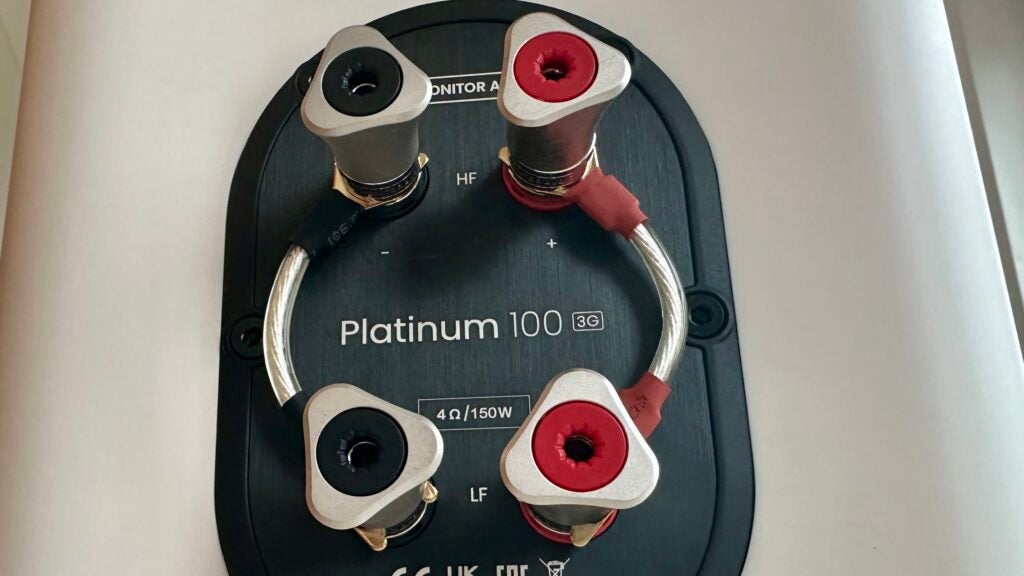

And they have the sort of dynamic potency to put considerable distance between the quietest and loudest moments of a recording, as well as to reveal the harmonic variations inherent in an unaccompanied voice or solo instrument.
Everything they do so well, they can do with virtually no regard for the sort of music you like to listen to. Jazz, classical, raucous old-school rock’n’roll, frantic ghetto house… it’s all the same to the Monitor Audio Platinum 100 3G. Of course, it’s possible to take them out of their comfort zone – but you’ll really have set your mind to it. Maybe if you can find some aggressive, compressed, overdriven music a la Melt Banana that actively resists the control and authority the speakers want to exert, you’ll find them sounding just a little uncomfortable. Just a little, mind.
Latest deals
Should you buy it?
You want to get a complete, explicit account of your music
The PL100 3G will tell you all there is to tell, for better or for worse
The rest of your system isn’t up to snuff
The Monitor Audio aren’t the pickiest, but if you want to hear what they’re capable of it’ll be a team effort
Final Thoughts
The law of diminishing returns applies, of course – but nevertheless I was quite startled by just how big a step on from the £3K loudspeakers I’d recently been listening to the Monitor Audio Platinum 3G are. The price means their appeal is restricted, of course – but if you’re fortunate enough to have them in your sights, they really demand to be heard.
How we test
We test every hi-fi speaker we review thoroughly over an extended period of time. We use industry-standard tests to compare features properly. We’ll always tell you what we find. We never, ever, accept money to review a product.
Find out more about how we test in our ethics policy.
Tested with real world use
FAQs
Monitor Audio says that the Platinum 100 3G can be used as a front/rear channel speaker in a home cinema setup, as well as for music.
UK RRP
USA RRP
AUD RRP
Manufacturer
Size (Dimensions)
Weight
Release Date
Driver (s)
Ports
Connectivity
Colours
Frequency Range
Sensitivity
Speaker Type
Impedance
›
